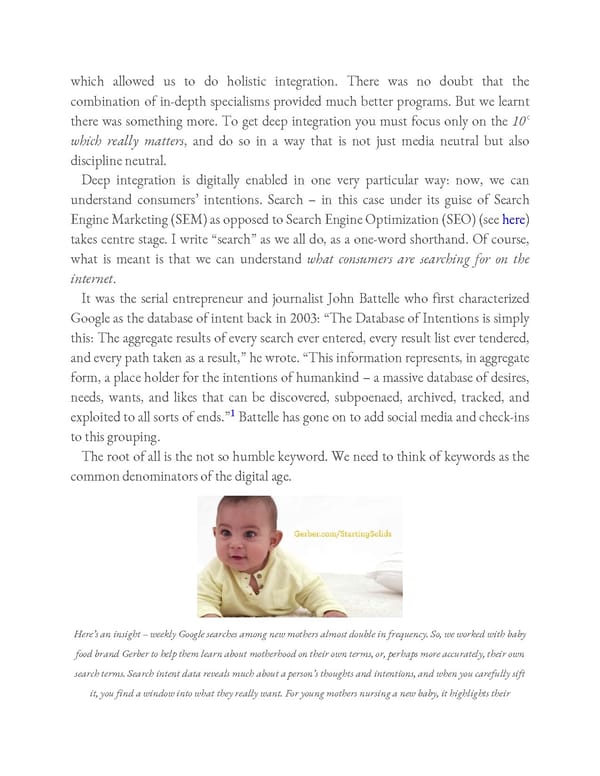which allowed us to do holistic integration. There was no doubt that the combination of in-depth specialisms provided much better programs. But we learnt there was something more. To get deep integration you must focus only on the 10° which really matters, and do so in a way that is not just media neutral but also discipline neutral. Deep integration is digitally enabled in one very particular way: now, we can understand consumers’ intentions. Search – in this case under its guise of Search Engine Marketing (SEM) as opposed to Search Engine Optimization (SEO) (see here) takes centre stage. I write “search” as we all do, as a one-word shorthand. Of course, what is meant is that we can understand what consumers are searching for on the internet. It was the serial entrepreneur and journalist John Battelle who first characterized Google as the database of intent back in 2003: “The Database of Intentions is simply this: The aggregate results of every search ever entered, every result list ever tendered, and every path taken as a result,” he wrote. “This information represents, in aggregate form, a place holder for the intentions of humankind – a massive database of desires, needs, wants, and likes that can be discovered, subpoenaed, archived, tracked, and 1 exploited to all sorts of ends.” Battelle has gone on to add social media and check-ins to this grouping. The root of all is the not so humble keyword. We need to think of keywords as the common denominators of the digital age. Here’s an insight – weekly Google searches among new mothers almost double in frequency. So, we worked with baby food brand Gerber to help them learn about motherhood on their own terms, or, perhaps more accurately, their own search terms. Search intent data reveals much about a person’s thoughts and intentions, and when you carefully sift it, you find a window into what they really want. For young mothers nursing a new baby, it highlights their
 Ogilvy on Advertising in the Digital Age Page 238 Page 240
Ogilvy on Advertising in the Digital Age Page 238 Page 240